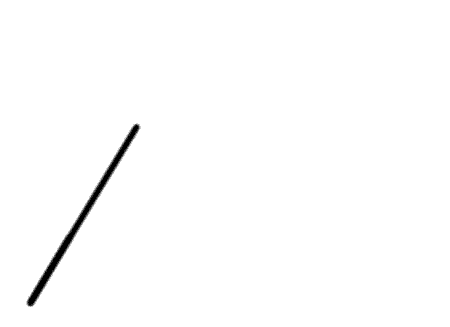Last week, I covered pullback trading, which is one of the most common and most important with-trend trading patterns. This week, I will dig deeper into some different patterns, but I thought it was worthwhile to first think a bit about the differences between with trend and countertrend trading.
This is also one of those topics that even casual chart readers should consider. You don’t have to be a hard-core technical trader to understand whether you are putting a trade on that is in alignment with the existing trend or against it. (And some of my readers may already be thinking they would never do a trade against the dominant trend. That is fine, but realize there could be good reasons for doing so, such as when a stock is very overextended or when you are playing for a longer term trend change.) Many people do not realize that with and counter trend trades require a very different approach to trade management–what you do after you get in the trade matters.
Why trade countertrend?
With so many marketing dollars focused on the genre, we hear “trend following” and “trade with the trend” as mantras, and many authors have oversimplified multiple timeframe trading to the concept of trading with a trend on a particular timeframe. Given all this, we might reasonably ask the question “why should I ever trade against the trend?”
First, and most obviously, trends do end. If we are only able to trade with the trend, then our participation at the end of the trend (“the trend is your friend, except at the end, where it bends…”) will be limited to giving back some profits and closing out trades. Yes, this is entirely ok for some traders, but it is possible to set up fantastic trades at those turning points.
Second, if the only tool you have is a hammer, every problem looks like a nail. When I started trading, I only had a with trend “setup”, so I found myself forcing it and looking for it everywhere, even where it didn’t make sense. Now, with some more maturity as a trader I would’ve probably learned that I simply should be doing nothing in many cases, but that learning curve was shortened when I started adding countertrend setups.
Third, there’s an analytical reason. I find trading patterns useful as analytical tools, as well. Even if I’m not trading a market, the patterns I trade are close enough to the bare reality of price action that I can get a read on trend integrity and strength by monitoring how trades would be working. This is probably a neglected area of technical analysis–the overlap between practical trading and analytics.
Last, countertrend trades fit some psychological profiles very well. The demands of trend and countertrend trading are very different, so it’s worth taking a moment to compare the two.
Trend vs countertrend
Simply put, trend trading is a style of trading that generally rewards more passive management. When you are trading with the trend, many sins may be forgiven. A little late or early on the entry? Overstay your welcome at the end of a trade? Hold a losing trade a little too long? No, none of those things are great, but, if you are aligned with a trend you can make mistakes like this and live to fight another day. Also, for trend traders, the right things to do is often nothing. Once you have the position on, it makes sense to sit and let the trend work in your favor. This where sayings such as “let your profits run” apply.
Countertrend trading takes a very different mindset. We must be quicker to take profits and very quick to take losses. Since you are trading against a trend, there is always a chance that trend will reassert itself and, if you hold on to losing trades too long, the market may rip your face off. Countertrend trading requires perfect discipline, both on entry and exit.
Is there any true countertrend trading?
I will leave you with a reminder that definitions are not simple. Take a look at the following animation:

You could make the argument that there is no true countertrend trading. In a true countertrend trade, we would buy it and the market would trend downward! This is, obviously, not what we’re usually trying to accomplish. More correctly, we are hoping to identify spots where the market will offer enough of a with-trend trade on our chosen timeframe to give a profit, and this may come at points where the trend (either on our timeframe or another) is overextended. In the example above, we’re entering long, which is countertrend to the shorter trend (in red), but it is a simple with-trend trade in the bigger picture. (And if you’ve read much of my work, you recognize the complex pullback!)
Tomorrow we’ll start digging into a few specific counter trend patterns to round out last week’s focus on pullbacks, and then we’ll look at how to put these together, both for the technical trader and the non-specialist who may want to figure out how to add some extra trading edge in the margin, or how to time entries with a little more precision.
Loved the Animation as much as the Content (Goes Very Well with the Post Title)…. Thank You !
Thanks. Yeah I may experiment with some more little animations like that. Seems like it might be a good way to illustrate some concepts.